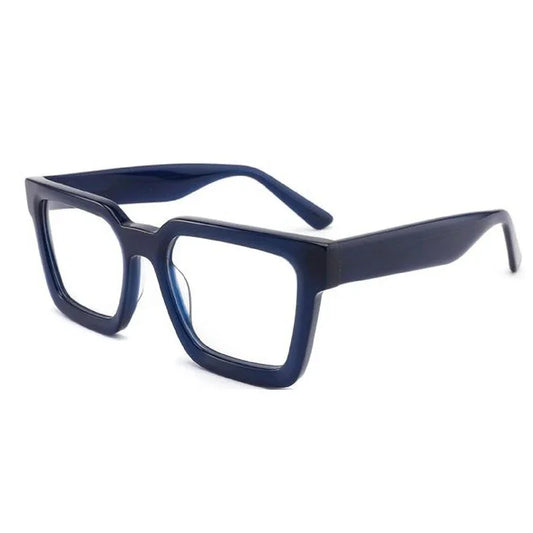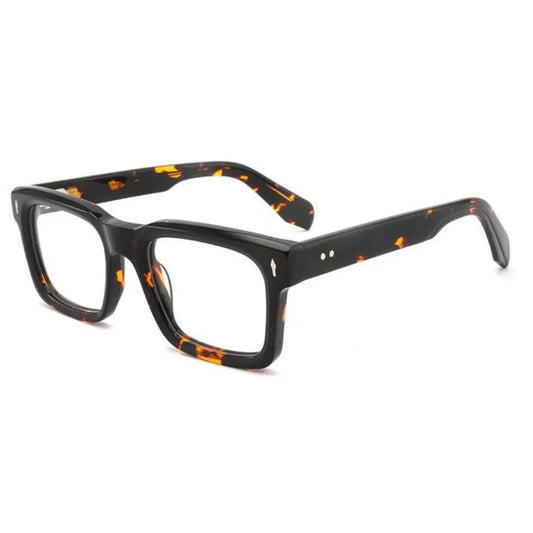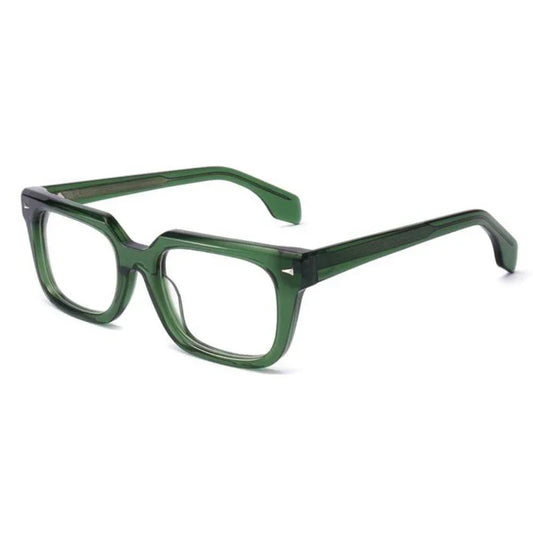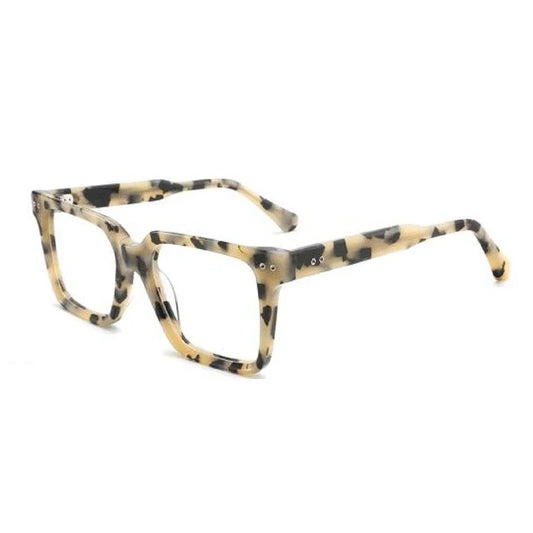
Men's Reading Glasses Guide: Everything You Need
Nearly 80 percent of men over 45 experience some level of near vision decline, yet many struggle to find the right solution for daily comfort. Reading glasses go beyond style; they offer targeted clarity for reading, mobile phone use, and other up-close tasks. With the right knowledge, you can easily choose frames and lens strengths that fit your needs and lifestyle, making everyday tasks noticeably easier.
Table of Contents
- What Are Men’s Reading Glasses?
- Key Types And Lens Strengths Explained
- Frame Styles And Fit Considerations
- Choosing Lenses For Lifestyle Needs
- Common Buying Mistakes To Avoid
Key Takeaways
| Point | Details |
|---|---|
| Understanding Reading Glasses | Men’s reading glasses are designed to assist with near vision challenges caused by presbyopia, offering styles like full-frames and half-frames for distinct needs. |
| Lens Strengths and Selection | Available in magnification strengths from +1.00 to +3.50 diopters, selecting the correct strength is vital for individual comfort and vision needs. |
| Importance of Frame Fit | Choosing the right frame style and fit is essential for comfort; measurements like lens width and bridge width play a crucial role in ensuring a proper fit. |
| Avoiding Common Mistakes | Key buying mistakes include neglecting professional prescriptions and lens coatings, which can lead to discomfort and visual issues. |
What Are Men’s Reading Glasses?
Reading glasses are specialised eyewear designed to help men overcome near vision challenges, particularly for close-up tasks like reading, smartphone use, and detailed work. These glasses feature corrective lenses that magnify text and improve visual clarity for individuals experiencing presbyopia - a natural age-related vision condition where eyes gradually lose ability to focus on nearby objects.
Typically, men’s reading glasses come in two primary frame styles: full frames and half-frames. Full frames cover the entire lens with reading prescription, providing comprehensive near vision correction.
Half-frames, alternatively, sit lower on the nose, allowing wearers to look over the top of the lens for distance vision while maintaining close-up clarity. Understanding the types of reading glasses can help you select the most suitable option for your lifestyle.
Reading glasses are available in multiple magnification strengths, usually ranging from +1.00 to +3.50 diopters. These strengths correspond to different levels of vision correction needed. Key features often include:
- Lightweight materials like plastic or metal
- Scratch-resistant lens coatings
- Anti-reflective treatments
- Stylish frame designs suitable for professional and casual settings
While reading glasses provide an affordable and convenient vision solution, it’s recommended to consult an eye care professional to determine your precise prescription and ensure optimal visual comfort.

Key Types and Lens Strengths Explained
Lens strengths are fundamental to understanding how reading glasses work, with options ranging from +1.00 to +3.50 diopters. These magnification levels help men address varying degrees of near vision challenges. Generally, lens strengths increase in 0.25 increments, allowing precise customisation of visual correction. Understanding lens types for reading glasses can help you navigate these options more effectively.
Typically, men can select from six primary lens strength categories:
Here’s a summary of common lens strengths and their suggested uses:
| Lens Strength | Use Case | Typical Age Group |
|---|---|---|
| +1.00 | Mild reading difficulty | Early 40s First signs of presbyopia |
| +1.50 | Moderate near vision issues | Mid to late 40s |
| +2.00 | Noticeable reading challenges | Late 40s to early 50s |
| +2.50 | Significant close-up needs | 50s and older |
| +3.00 | Advanced magnification | 60s and above |
| +3.50 | Maximum over-the-counter strength | Often 65+ or advanced presbyopia |
- +1.00: Minimal magnification, ideal for early presbyopia symptoms
- +1.50: Suitable for moderate near vision difficulties
- +2.00: Recommended for noticeable reading challenges
- +2.50: Appropriate for significant vision correction needs
- +3.00: Advanced magnification for substantial near vision impairment
- +3.50: Maximum over-the-counter strength for extensive vision support
When choosing lens strengths, consider factors like reading distance, lighting conditions, and personal comfort. Reading glasses can be purchased as full-frame designs covering entire lenses or half-frame styles that allow distance viewing over lens tops. Professional eye examinations remain crucial for determining the most appropriate prescription and ensuring optimal visual performance.
For best results, men should test different strengths by reading small print and assessing comfort levels. Some individuals might require different strengths for various tasks like reading books, using digital screens, or performing detailed work. Consulting an optometrist provides personalised guidance in selecting the most suitable reading glasses for individual vision needs.
Frame Styles and Fit Considerations
Choosing the right frame style is crucial for both comfort and personal expression in men’s reading glasses. Contemporary designs offer a range of options from classic rectangles to bold round shapes, ensuring there’s a perfect match for every face and personality. Guide to glasses frame styles can provide additional insights into selecting the most flattering option.
When considering frame fit, three key measurements are critical:
- Lens Width: Determines how the glasses look across your face
- Bridge Width: Ensures comfortable positioning on your nose
- Temple Length: Guarantees proper grip and stability behind your ears
Popular frame styles for men include classic rectangular frames for professional settings, rounded frames for a softer look, and rimless designs for a minimalist approach. Neutral colors like black, grey, and navy remain timeless, while transparent and bold-colored frames have emerged as contemporary trends. Transparent frames, in particular, offer a modern and versatile aesthetic that complements various outfits and face shapes.
For optimal comfort and fit, men should consider their face shape, personal style, and daily activities. Some frames work better for specific face shapes rectangular frames suit round faces, while rounded frames can soften angular features. Additionally, consider practical aspects like weight, flexibility, and durability when selecting reading glasses. When in doubt, trying on multiple styles and consulting with eyewear professionals can help you find the most comfortable and flattering option.
Choosing Lenses for Lifestyle Needs
Selecting the right lens type is crucial for ensuring optimal visual performance across different daily activities. Lens materials and specialized coatings play a significant role in addressing specific lifestyle needs, from digital screen use to outdoor work. What Are Prescription Reading Glasses can provide additional context for understanding lens options.
Modern reading glasses offer several lens types to match individual requirements:
- Single-Vision Lenses: Best for consistent near-distance tasks
- Bifocal Lenses: Provide vision correction for both near and far distances
- Progressive Lenses: Offer seamless transition between different vision ranges
Material choices are equally important, with premium options like CR-39 and polycarbonate providing exceptional clarity and durability. Advanced lens coatings can transform reading glasses into versatile tools, including:
- Blue light blocking for digital screen protection
- Anti-reflective treatments reducing eye strain
- UV protection for outdoor activities
- Scratch-resistant surfaces for increased longevity
Ultimately, the ideal lens choice depends on individual lifestyle demands. Professionals spending hours on computers might prioritize blue light protection, while outdoor enthusiasts could focus on UV and impact-resistant coatings. Consulting with an eye care professional can help pinpoint the most suitable lens configuration for your specific needs, ensuring both comfort and visual performance.
Common Buying Mistakes to Avoid
Buying reading glasses might seem straightforward, but several critical mistakes can compromise your visual comfort and overall experience. Understanding these pitfalls can help you make a more informed purchasing decision. Complete Guide to How Reading Glasses Work offers additional insights into making the right choice.
The most prevalent buying mistakes include:
- Ignoring Proper Prescription: Assuming one-size-fits-all approach
- Prioritizing Price Over Quality: Choosing cheap glasses that cause eye strain
- Overlooking Frame Compatibility: Selecting frames that don’t suit your face shape
- Neglecting Lens Coatings: Skipping essential protective treatments
- Avoiding Professional Consultation: Purchasing without expert guidance
Many men make the error of selecting reading glasses based solely on appearance or price, which can lead to significant visual discomfort. Cheap glasses might save money upfront but can cause headaches, eye fatigue, and potential long-term vision issues. The right reading glasses should provide clear vision, comfort, and protection tailored to your specific needs.
To avoid these mistakes, invest time in understanding your vision requirements. Get a professional eye examination, try multiple frame styles, and consider lens coatings that match your lifestyle. Remember that reading glasses are not just an accessory but a critical tool for maintaining your visual health. Don’t compromise on quality or comfort just to save a few dollars.
Discover the Perfect Men’s Reading Glasses for Your Vision Needs
If you are struggling with near vision challenges like reading fine print or using your phone, you are not alone. Choosing the right lens strength and frame style can seem overwhelming but it does not have to be. Whether you need subtle magnification or bold geometric designs, finding glasses that combine comfort, style and sharp vision is key to daily confidence and ease.
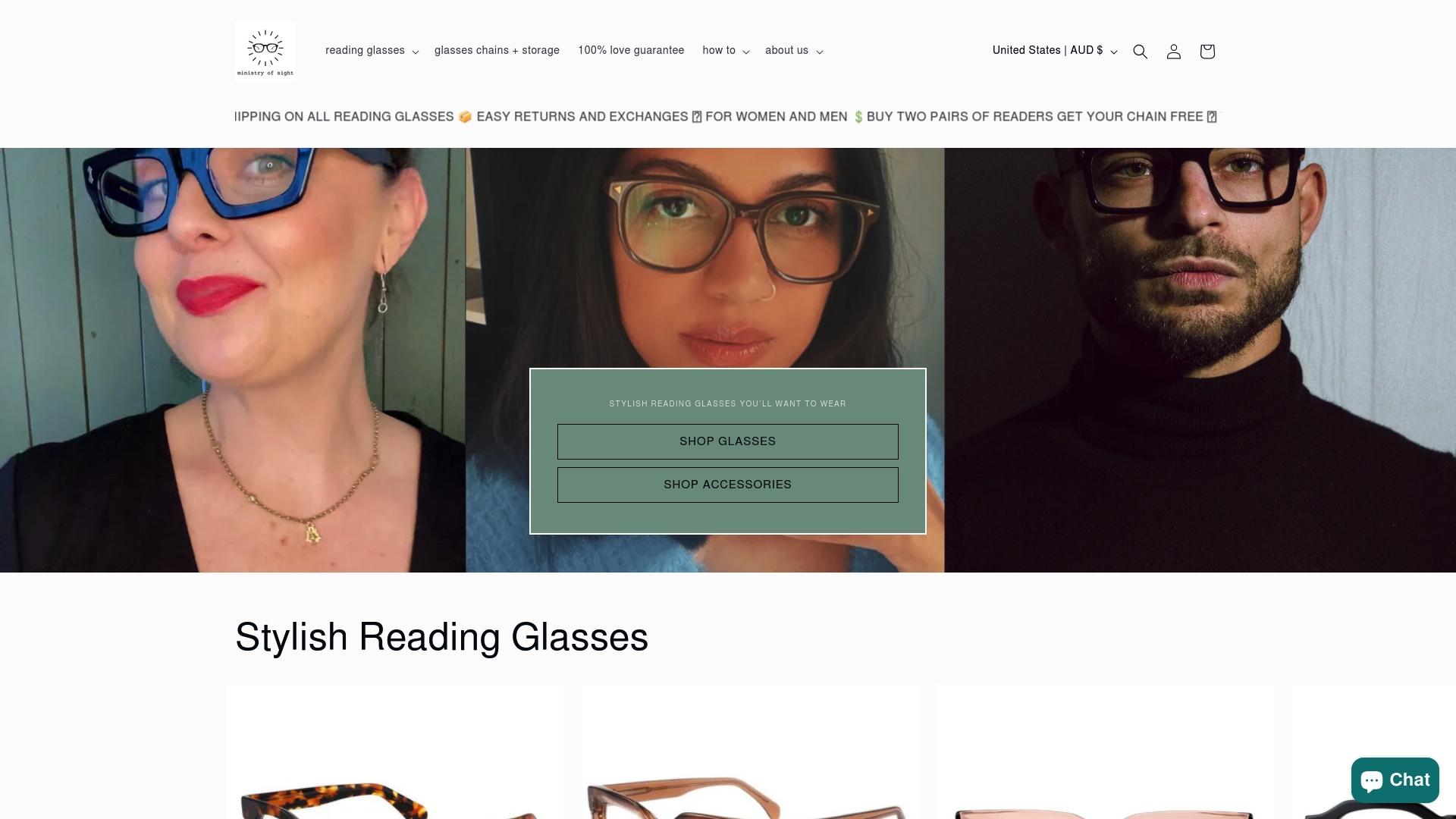
Explore our Geometric Reading Glasses – ministry of sight collection for stylish options that improve your close-up focus without compromising your look. Take advantage of offers at Ministry of Sight with free shipping across Australia and buy-one-get-one deals. Act now to upgrade your eyewear and enjoy clear reading vision tailored to your lifestyle from the experts you trust.
Frequently Asked Questions
What are men’s reading glasses used for?
Men’s reading glasses are designed to aid individuals with near vision challenges, helping them read, use digital devices, and perform detailed tasks with improved clarity and comfort.
How do I choose the correct lens strength for reading glasses?
To choose the correct lens strength, consider your reading distance and comfort level. Lens strengths range from +1.00 to +3.50 diopters, with higher numbers indicating stronger magnification. Consulting an eye care professional is recommended for personalized guidance.
What types of frame styles are available for men’s reading glasses?
Men’s reading glasses come in various frame styles, including full-frame, half-frame, rectangular, rounded, and rimless designs. You can choose based on your personal style, face shape, and comfort preferences.
What lens types are suitable for different lifestyle needs?
The suitable lens types include single-vision lenses for consistent near tasks, bifocal lenses for both near and far vision, and progressive lenses for seamless vision transitions. Selecting the right type depends on your specific daily activities and visual requirements.


